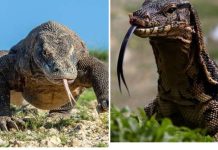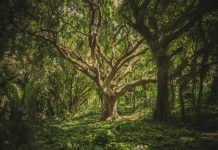Have you ever pondered the hidden world of venomous snakes? Join us in this series as we reveal the mysteries of these misunderstood creatures. From deserts to rainforests, each snake is a unique marvel, not just predators but nature’s own pest control. They play a crucial role in maintaining the delicate balance of life and ensuring harmony in our ecosystems. Let’s dig into why these snake guardians are important in our complex natural world.
We’re going to uncover each snake based on the manner they were arranged in the previous article, we’d look at their habitat, behaviour, feeding habits and ecological importance
Puff Adder (bitis arietans)
Habitat: Resides in lots of different places, from hot deserts to dense rainforests.
Behaviour: Solitary and nocturnal [prefers to be alone and active during the night.], puff adders are skilled ambush predators using chemical and heat signals for prey detection. Learn more
Feeding Habit: Feeds on various prey, mainly keeping rodent populations in check, and adapts its dining style depending on the size of its meal.
Ecological Importance: Acts as nature’s pest control, preventing overpopulation of pests that could impact ecosystems and agriculture.
Forest Cobra (naja melanoleuca)
Habitat: Adaptable to various altitudes, found in forests, savannahs, and near water sources.
Behaviour: Nocturnal, arboreal [active during the night and loves hanging out in trees], and a secondary consumer that helps control rodent populations.
Feeding Habit: Contributes to the balance by preying on potential crop pests and disease vectors.
Ecological Importance: Venom is used in cancer and protein research while aiding in controlling rodent-borne diseases.
African Bush Viper (atheris squamigera)
Habitat: Inhabits tropical forests and dense vegetation areas with abundant small prey.
Behaviour: Nocturnal [active at night], ambush predator with rapid striking abilities.
Feeding Habit: Contributes to pest control by preying on small rodents.
Ecological Importance: Farmed for venom, used in antivenom production and medical research.
Black-necked Spitting Cobra (naja nigricollis)
Habitat: Frequently found in the savanna and semi-desert areas of Africa.
Behaviour: Solitary [prefers being alone], adaptable to both nocturnal and diurnal [can be active both during the day and night] activity, excels in tree climbing.
Feeding Habit: Known for venom projection and efficient pest control abilities.
Ecological Importance: Contributes to regulating pest populations, especially in agricultural areas.
Egyptian Cobra (naja haje)
Habitat: Inhabits diverse landscapes, from open fields to areas with slight moisture. Frequently found in proximity to human settlements where rodents and domestic fowl attract them.
Behaviour: Primarily ground-dwelling, active during twilight [the time of day when the sun is below the horizon but its rays illuminate the sky roughly 30 minutes before sunrise and 30 minutes after sunset], occasionally engaging in sunbathing. Displays a preference for secure shelters such as abandoned burrows and termite mounds.
Feeding Habit: Actively forages [actively looking, hunting, or gathering food to meet its dietary needs], sometimes venturing into human spaces, particularly targeting domestic fowl. Displays a preference for toads but also consumes a variety of prey including small animals, birds, eggs, lizards, and other snakes.
Ecological Importance: Plays a crucial role in pest control around human habitats. Exhibits defensive behaviour when threatened. Contributes to ecological balance by controlling potential pest populations, showcasing adaptability to diverse ecosystems.
Boomslang (dispholidus typus)
Habitat: Found in various ecosystems, from karoo scrubs [arid conditions, low rainfall, and unique vegetation adapted to semi-desert environments] to lowland forests, preferring moist areas.
Behaviour: Solitary, diurnal, arboreal [loves being alone, active during the day and loves and lives on trees], and a skilled ambush predator.
Feeding Habit: Carnivorous, preying on small arboreal [tree-living animals] lizards and frogs.
Ecological Importance: Provides food for various birds, including falcons and eagles. Learn more
Spotted Night Adder (causus maculatus)
Habitat: inhabits the forests, savannahs, and semi-deserts, active during all times of the day.
Behaviour: Slow-moving, strikes quickly, and feeds mainly on frogs.
Feeding Habit: Specializes in consuming frogs and toads.
Ecological Importance: Plays a role in maintaining balance within its habitat.
Venomous snakes, from puff adders to boomslangs, play indispensable roles in our ecosystems. They serve as nature’s pest controllers, maintaining the balance of species and preventing the overpopulation of pests that could disrupt ecosystems and agriculture. Understanding their habitats, behaviours, and feeding habits sheds light on the complex pattern of our natural world, where these serpents are not just inhabitants but vital guardians of the delicate balance that sustains life.
Photo credit (American Tarantula & Animals)















